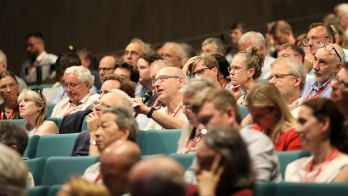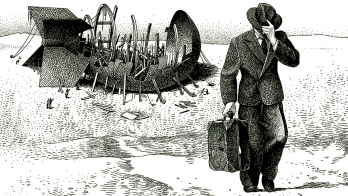CERN is a de facto global laboratory, with the LHC set to be the centre of particle-physics research for a decade or more, and comprises the largest scientific user community in the world. More than just a particle factory, CERN is a knowledge factory, enabling scientists to make discoveries, disseminate them and train younger generations. CERN is an example to the world of international scientific, technical and human collaboration.

The Council recognized – in the European Strategy for Particle Physics – that the next five years will be crucial, not only for CERN but for the future of particle physics in general. The start of LHC exploitation will provide a unique capability to explore new experimental vistas and an opportunity to seek support for possible new projects, such as upgrading the LHC itself and for a successor to explore the LHC’s breakthroughs.
Gathering the necessary support will require motivating and mobilizing the energies of all CERN stakeholders, both internal and external. Not only is it essential that the LHC be a technical success, but also that the implications of its discoveries for possible new projects be evaluated promptly and convincingly. This new physics should excite the imaginations not only of high-energy physicists, but also the wider scientific community and the general public – even schoolchildren and politicians. Only then could the future of accelerator-based research into the fundamental nature of matter – and any major new project – be assured.
Even so, it will be essential to optimize the deployment of the resources available for particle physics at CERN and other European laboratories. Any new project will surely be global in nature, so it will also be necessary to amplify the dialogue with our prospective partners in other regions of the world.
Possible directions
The European Strategy for Particle Physics also recognizes the importance of R&D on possible future projects in the period before LHC results set the favoured direction for particle physics. The Proton Accelerators for the Future group that advises the director-general has already made an initial plan for upgrading CERN’s Proton Accelerator Complex (Garoby 2007). Following these studies, the director-general set out the R&D priorities that have been approved by CERN Council.
Another report, by the CERN advisory group on Physics Opportunities with Future Proton Accelerators (POFPA) (Blondel et al. 2006), also reviewed some of the scientific motivation for upgrading the LHC. This report discusses possible synergies of upgrades of the LHC injector chain with research programmes in fixed-target physics, neutrino physics and nuclear physics.
Beyond the LHC, there is a general consensus that the priority for the next major international project is a linear electron–positron collider. The International Linear Collider (ILC) concept is potentially very interesting if the LHC reveals new physics within its energy range. Nevertheless, even in this case, physics will eventually require higher energies, hence the need for R&D on the Compact Linear Collider (CLIC) concept, within the international framework provided by the CLIC Test Facility 3 collaboration. CLIC, however, is ambitious; significant technical hurdles remain to be overcome before its feasibility can be demonstrated.
In view of the different options for the location, energy and timescale of a future linear electron–positron collider, CERN should collaborate with partners in Europe and elsewhere on R&D for a possible next-generation neutrino project. This might be based on the “super-beam” and “beta-beam” concepts, or it might be a full-blown “neutrino factory” based on a muon storage ring. The choice between these options will depend on technical feasibility as much as new results in neutrino physics, such as measurements of – or constraints on – the third neutrino-mixing angle.
In parallel with these major projects, the European Strategy recognizes the importance of a variety of smaller-scale projects at CERN that address complementary issues in particle and nuclear physics. Many of these, such as the Antiproton Decelerator, ISOLDE, nTOF and some fixed-target experiments are of unique global scientific interest. Such projects broaden the appeal of CERN and help train many young physicists. The POFPA report underlined the interest of several proposals for the future, in addition to those that would be made possible by upgrades of the LHC injector chain.
While the laboratory’s technical strength is the bedrock upon which any future CERN project will be built, this is likely to be even more global in nature than the LHC, with CERN becoming recognized explicitly as a “world laboratory”. Hence, CERN will need to nurture and build on its existing international partnerships with Canada, Japan, Russia and the US, while collaboration with emerging powers such as China and India should be expanded. CERN’s growing contact with other world regions such as the Middle East and Latin America will also become more important. CERN’s future plans should be discussed with its international collaborators in a spirit of partnership, in which the interests of all regions of the world are respected.
• R Garoby 2007 (http://doc.cern.ch/archive/electronic/cern/preprints/ab/ab-2007-074.pdf) and A Blondel et al. 2006 (http://arXiv.org/pdf/hep-ph/0609102).








